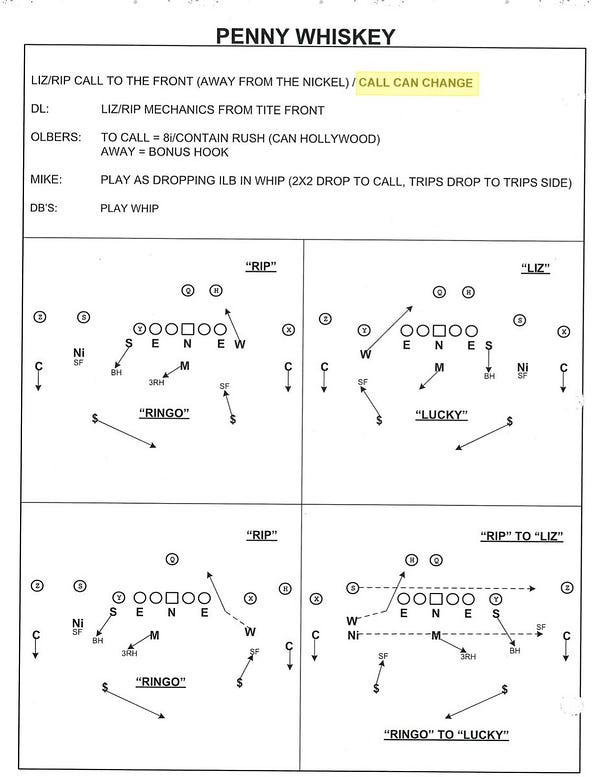What's Wrong with the Seahawks Run Defense?
Quite a bit. The good news is there are areas the Seahawks can put right. 3500 words and 10 bad run fits later, Seahawks On Tape has answers:
In the case of the Seahawks’ run defense, the raw numbers from their week 3 27-23 home defeat to the Atlanta Falcons do tell a lot of the story: Seattle allowed 179 rushing yards on 31 carries, a 5.8 yards per carry average, plus 2 rushing touchdowns.
Most galling was Atlanta’s main rushing threat, Cordarelle Patterson, carrying 17 times for 141 rushing yards and a touchdown, a brutal 8.3 yards per carry average. The wide receiver convert was dominant.
Diving into the tape and exploring the reasons as to why Clint Hurtt’s Seahawks defense allowed so much ground production does, after the initial misery, offer some room for optimism. While the length of Seattle’s run defense rectifying process is uncertain, there are, at least, some identifiable variables that can be adjusted as the Seahawks look to remedy their ailment.
Before the tape, though, let’s deal with some insightful data. Seattle’s defensive front choices and each front’s respective performance is noteworthy. There was, and is, a lot of talk about the new Seahawks 3-4 defense. Hurtt, however, has favored a sub-package, nickel approach with an over g structure: looking like a 4-2-5, even front—technically 2-4-5 personnel.
Seattle was in nickel for 67% of their defensive snaps against Atlanta. This was despite the Falcons being largely a heavy-personnel, 21 (2 running back, 1 tight end) and 12 (1 running back, 2 tight end) team—as evidenced by TE Parker Hesse taking 75% of the snaps, TE Kyle Pitts 67%, FB Keith Smith 40%, and TE Anthony Firkser 16%. On neutral downs, the Seahawks were not afraid to play nickel to these looks.
As identified by my Seattle Overload co-host Griffin Sturgeon, when the Seahawks were in their base 3-4 personnel, they gave up just 3.6 yards per carry. And base brings their bear, tite fronts onto the field. This is where they have two wide edges from the OLBs, and then the two guards and center covered up by interior defensive linemen. They either run quarter-quarter-half (Tite Will 6) or 3-deep, 3-under fire zone blitzing both edges (Tite Saw).
However, Seattle’s nickel, 2-4-5, personnel—and the over g fronts—saw the Seahawks give up a much larger 7.6 yards per carry.
Hurtt was asked about the nickel, four-down heavy choice last Wednesday, and the defensive coordinator pointed towards the Falcons’ versatile personnel.
“Well, what happens is, when you play a team that is multiple in different personnel groups, alright? Like Atlanta is. And they vary, usually play after play, they rotate a lot of stuff,” Hurtt said.
“And you always have to do a study on what do those formations equate to. You know, are they playing big personnel groups to play big and run the football like some traditional offenses? You know, or is it broken formations? You know, a lot of it, when they use multiple tight ends. Like a guy like a Kyle Pitts, they really use him more like a wide receiver. So even though it might be a big personnel grouping like 13, it plays more like 12 or like 11 personnel. So, you can play nickel. And you want that, because you want to be able to have, you know, your pressure and coverage opportunities, and things of that nature. So, it always varies by gameplan. But that’s the reason why you use that, depending on who the opponent is.”
Nickel does offer the Seahawks more pressure and coverage options. Yet its poor performance versus the run, and Hurtt’s desire to play it even on early downs—Atlanta personnel multiplicity or not—does warrant review. Unsurprisingly, the All-22 featured more run defense struggles from even nickel fronts than base bear. The loss of Jamal Adams is noteworthy here. His skill playing in the box would have allowed the Seahawks to run a 3-3-5 “penny” package and bear look in nickel, something that neither Josh Jones nor Ryan Neal have yet been deemed worthy of by Seattle’s defensive coaching staff.



Okay, now to the All-22 and the real answers of how Seattle can fix their run defense:
Base/Tite Will 6
For the first bit of film, let’s address the two patchy base run fits the Seahawks suffered. These 2 carries for 24 yards arrived on what, before Marcus Mariota’s giftwrapped fumble, looked like Atlanta’s game-winning drive. This consecutive shoddy execution of “Tite Will 6” damaged Seattle’s base YPC average.
(For more on “Tite WIll 6”, read this)



